Læsø,Denmark 作者: 来源: 发布时间:2021-04-14
一、人口,面积,所属地区
Population: 1,786
Area: 114 km²
Municipality in Nordjylland
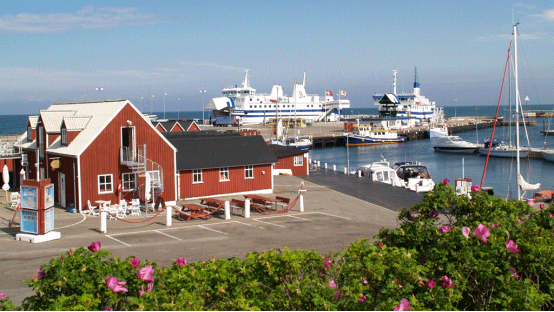
二、自然地理(地理环境、自然资源、交通情况)
The municipality is in Region Nordjylland in northern Denmark. The municipality, Denmark's smallest, covers Læsø and neighboring small islands for a total area of 114 square kilometres (44 sq mi). The main town and the site of its municipal council is Byrum.
Because Læsø is an island and lies in the Kattegat, its neighboring municipality, Frederikshavn on the Jutland peninsula, is separated by water, the Læsø Rende, from the island municipality.
Ferry service connects Frederikshavn on the Jutland peninsula to the municipality at the town of Vesterø Havn while Østerby Havn is the island's fishing harbour.
Læsø is the largest island in the North Sea bay of Kattegat, and is located 19 kilometres (12 mi) off the northeast coast of the Jutland Peninsula, the Danish mainland. Læsø is also the name of the municipality on that island. The island is a location mentioned in several instances in Norse mythology, including as the dwelling of the sea jötunn Ægir and as a feasting place of the Norse gods, the Æsir.
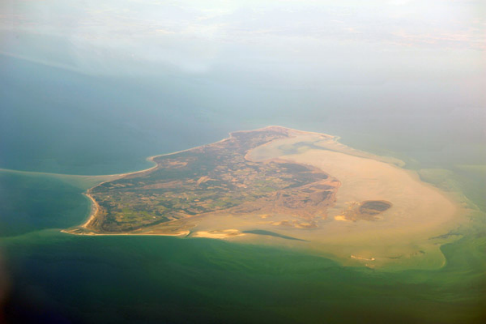
Læsø has an outstanding botanical interest. The nature-types on and around Læsø includes open water, extensive mudflats, sand banks, heathland, islets and areas of arable land. It houses Denmarks largest tidal saltmarsh outside the Wadden Sea but the decline in grazing animals, has led to a gradual vegetational succession. Invasive species are colonizing the site, especially Japanese Rose and scrub clearance has been implemented to re-establish the former pastures open heathland. Seals like the Harbor seal, are breeding around Læsø and the whole area is an internationally important area for wintering, molting and staging waterbirds. Therefore, a Ramsar protection was put into force in 1977 (number 149) and today it encompass 66,548 ha.
Together with Anholt, Læsø belongs to the Danish "desert belt"; during the summer months there is so little rain that streams and ponds partly dry up.
Læsø is home to the bee subspecies European dark bee. The species is protected by Danish law which prohibits the import of other species to the island. The law has not been enforced and today normal bees and brown bees are both used for the production of honey. The island has been split in two parts for bee management, one for each species.
Transport
On Læsø it is free to ride the bus. North Jutland's Traffic Company Route 840 serves Læsø.
The timetable is adapted to Læsø Ferry's departure and arrival times, the opening hours of school and leisure arrangements, as well as the general need for public transport between Læsø's three cities.
There is no taxi ride on Læsø.
Læsø Airport is a municipal owned and operated airport. The airfield is located approx. three kilometers north of Byrum.The airfield is used primarily for private flights, but also for taxi flights to and from Roskilde and Anholt.There is a paved runway of 928 meters. Lane 06 and Lane 24. The place is self-catering. Registration and payment of landing fee takes place at the aerodrome office.Landing lights can be operated at frequency: 123.175.
It is possible to rent bicycles and electric cars at the airfield.
三、经济发展和规模
Personal Taxation 2019
Municipality Tax rate: 26.50
Health contribution: 8.00
Church Tax rate: 1.30
Total taxation: 35.10
Basic taxes 2019
Municipality Land Tax: 34.00

*All amounts are in DKK per. per capita in current prices
四、产业特点重点项目
At its meeting on September 30, 2013, the local council adopted a new business strategy for Læsø Municipality.The strategy concludes that the business focus areas can be combined into three growth potentials:
Food
In order to create volume and growth, foods from Læsø must be marketed to a far larger market than Læsø itself can represent. This means that a market must be created throughout Denmark and preferably also with exports to other countries.
Læsø is already known for a strong brand in lobster and salt, where the respective companies have managed to create economically strong companies with a brand that is well known and recognized far beyond the country's borders.
It is important to focus on and work on that other food producers on Læsø will be able to develop into a market outside Læsø. Food from Læsø, and assuming it is quality food, has good opportunities to be well received in a market outside Læsø. Typically, these will be niche, high quality local foods that can be marketed and marketed in the high end foods category.
There are an increasing number of able-bodied consumers who appreciate quality food, which at the same time can provide storytelling and traceability. The market is clear and there is a trend that is increasing.
In order to create growth within the food industry on Læsø, it is crucial that there is increased sales of goods outside the island.
The local council will actively support the work and initiatives that promote the sale of food outside the island
Tourism / Experiences
The population of Læsø is under pressure, and in order to maintain a society offering business services, trade, public service and thus workplaces, it is crucial that more guests / tourists come to the island.
Læsø has a fantastic nature that attracts tourists and guests year after year. In order to attract an increasing number, it is important to be able to offer experiences beyond the ordinary. By way of example, Læsø is already known and famous for its Læsø Salt, which is a major draw patch for tourists. Here, tourists can have an authentic experience where they can see how the salt is produced, hear the story of Læsø Salt and they can taste and buy the product. Similarly, Læsø is also known as a good place with leisure and business activities within health, wellness and Icelandic horses, which are used for both leisure activities and leadership development.
There are countless other opportunities to develop concepts and activities in the field of experiential tourism and here is a selection of examples: running, cycling, sea kayaking, art, culture, music, festivals, business events, events of various kinds. There, in addition to all the good, local foods that can be bought home and experienced at restaurants and eateries on Læsø.
Entrepreneurship
Work to inspire and support entrepreneurs must continue and preferably intensify. Entrepreneurship needs to be worked on both start-ups, budding in companies and the transfer of companies.
Together with the strategy, the Municipal Council adopted an action plan to support the work towards the goals. The action plan describes the establishment of various networks within the focus areas and Læsø's participation in the Interreg KASK project The Nordic Meal in collaboration with the Municipality of Frederikshavn.
The Nordic Meal
Læsø Municipality is part of the project "The Nordic Meal", which is an Interreg KASK pre-project over 10 months in the period August 2013 - end of May 2014. The project is carried out in collaboration with Norwegian partners and during the project period a Swedish partner must be found and appointed.
Danish partners in the project are Erhvervshus Nord and Læsø Municipality. Erhusvshus Nord undertakes all administrative work in connection with the project.
Oral commitments were received from the Interreg KASK Secretariat that the application was granted. We await the written grant, which is subsequently sent to Læsø Municipality.
A steering group with representatives from Erhvervshus Nord and Læsø Municipality is set up.
The project is financed by the Municipality of Frederikshavn with DKK 200,000, Læsø Municipality with DKK 100,000 and Interreg. KASK funds DKK 300,000.
The project must help pave the way for good local food to become known in a larger geographical area and thus help to brand our area as an attractive place to visit and be a tourist. New and smoother logistics systems need to be developed so that access to niche-produced goods can extend into a larger area for restaurants, hotels, specialty stores and the private consumer.
五、风景名胜,景点
Museumsgården
Address: Museum Road 3, 9940 Læsø
4-length seaweed from the 1600s.
Everywhere in the building construction, you can see signs of where the woodwork originates from, for example, the museum yard. stranding timber from ships that grounded at Læsø.
You can recognize shackles, bits of knots and heavy ship planks with some holes. However, the forceps are first and foremost what is characteristic of the traditional Læsø building custom.
A seaweed roof is not replaced as is the case with thatched roof, it is supplemented.
The museum courtyard today appears with the original and original interior of the 19th century.
At the Museumsgården you can see Stubmøllen, the last of its kind preserved on Læsø
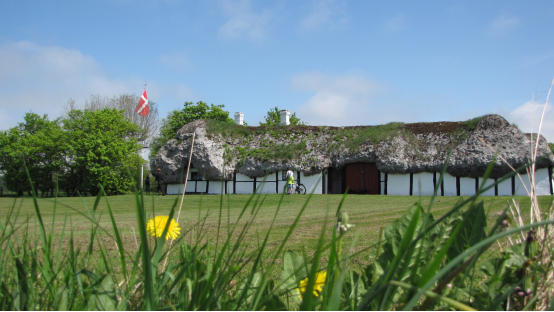
Bovet
Address: Bovet, 9940 Læsø
Southeast facing bay with beach meadow, which goes into the Wadden Sea.
In summer, large parts of Bovet can be dry and you can walk several kilometers from the coast.
In spring and autumn you can observe large quantities of bud swans, dark-bowed geese and other migratory birds in Bovet.
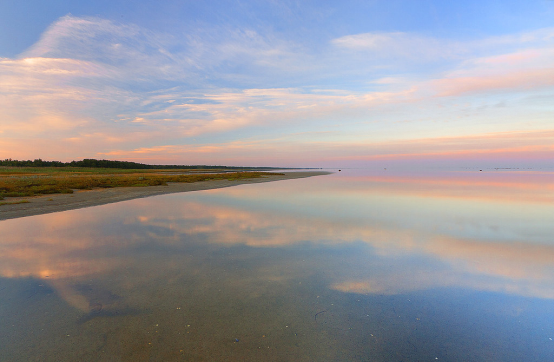
Byrum Church
Address: Byrum Hovedgade 46, 9940 Læsø
Byrum church is one of the country's oldest churches.
It was the Cistercian monks from Vitskøl Monastery who built the church around 1200.
Byrum church is a unitary church, which means it has no side ships. The church is the largest of the island's total of three churches, and the only one that has vaults throughout the room.
It was originally built in Romanesque style, but the triangular chancel, tower and exterior pillars were built in the Sothotian era (17-1800s).
The three-winged altarpiece dates from the year 1450 and is Catholic.
Once it has been allowed to be preserved after the Reformation, it is because Læsø did not come to loot.
The baptismal font is carved in granite and carries a large beautiful baptismal dish from the year 1684.
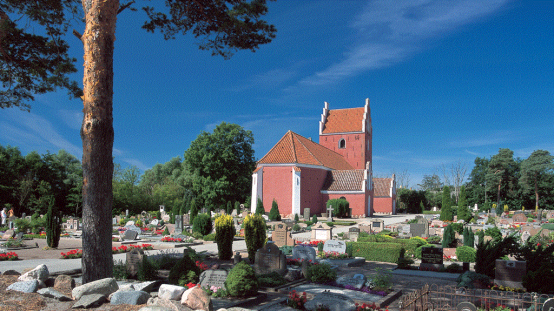
六、历史文化
Læsø municipality was not merged with other municipalities in the nationwide 2007 Kommunalreformen ("The Municipal Reform" of 2007).
In the Middle Ages, the island was famous for its salt industry. The ground water can reach over 15 percent salt, and this was naturally concentrated in flat salt meadows during the hot dry summers. The final concentration, carried out in hundreds of salt kilns, consumed large amounts of wood. Eventually the island became deforested, sandstorms buried villages, and salt extraction was banned. Since the end of the 1980s it has been resumed on a small scale as an archaeological experiment and a tourist attraction.
Læsø is home to unique styles of Danish traditional music. Most of it is not played any more but has been preserved through intense documentation and research in the 1980s and 1990s.
七、联系方式
Mayor: Karsten Nielsen
Address: The Doctor Road 2, 9940 Læsø
Telephone: 9621 3000
mail: kommunen@laesoe.dk
Facebook: https://www.facebook.com/L%C3%A6s%C3%B8-Kommune-176945658994820/
Website: https://www.laesoe.dk/
